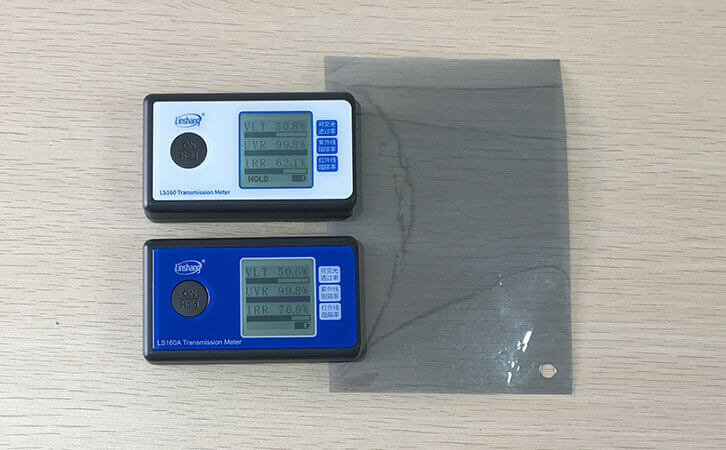Why is the 1400nm Solar Film Transmission Meter more Expensive than the 950nm?
Linshang classic three-band solar film transmission meter can be divided into two types according to the built-in infrared light source band:940nm and 1400nm.The other two bands of light source are mainly 365nm ultraviolet LED and 380-760nm visible light source. Therefore,the price difference between instruments with the same visible light and ultraviolet light source is mainly infrared.Why is the 1400nm solar film transmission meter more expensive than 950nm?
In fact,this is entirely a matter of raw material costs.First of all,the 1400nm infrared LED light source is scarcer than the 940nm light source,so the cost of the light source is much higher.In addition,the receiver for the 1400 nm infrared source is also more expensive.Therefore,the 1400nm solar film transmission meter is more expensive than the 950nm instrument.
The solar film used in these two infrared light source testers is also different. Different solar films do not have the same transmittance (rejection rate) for different wavelengths of light.The common endothermic film is mainly for the infrared ray rejection rate of 940 nm. Some films with better reflection performance (such as metal film, ceramic film,etc.) have higher infrared ray rejection rate at 1400 nm.
Therefore,when choosing a solar film transmission meter,if you mainly want to highlight the better thermal insulation performance of the solar film,you can select the appropriate instrument by referring to the above suggestions.It is recommended to use 1400nm band instruments for measuring metal films and ceramic films.940nm band instruments are recommended for measuring endothermic films.
If you want to comprehensively evaluate the infrared blocking performance of a film,you can also choose the LS182solar film transmission meter with two infrared light sources.
- Choosing the Right Window Tinting Film
- Window Tint Meter | Pros and Selection Methods of Architectural Membrane
- Advantages of LS110H and LS110A Split Transmission Meter
- Best Choice:LS182 Solar Film Transmission Meter
- Solar Power Lightens Up with Thin-Film Technology
- What is the Solar Heat Gain Coefficient Ratings (SHGC)
